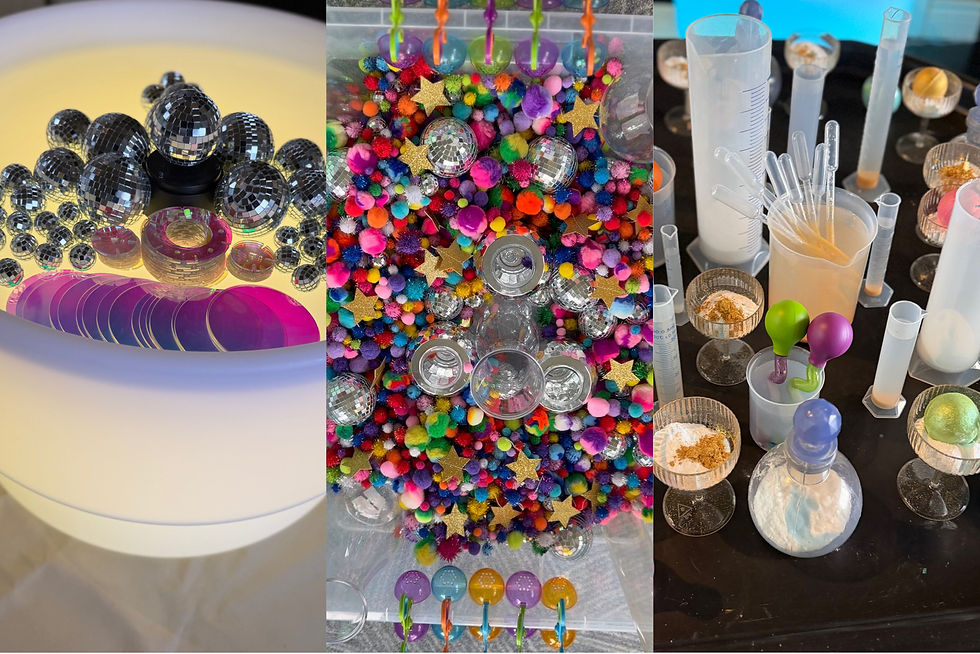Identifying the Zones of the Ocean
- Yasmeen Kamrani Sallam

- Jul 6, 2021
- 2 min read
To continue further extending ocean exploration inviting a child to learn about the zones of the ocean on the light table is an enamoring multi sensory option.

To set this invitation you will need a light table, liquid water colors (black, blue, teal, turquoise, white, yellow, gold), rectangular silicone mold, ocean life figurines, and a clear tray. Read a book such as Under The Ocean or show images of the different zones. Next if the child is old enough to mix and create the layers of ocean colors into the molds, let them do so.
Once you finish your discussion, observation and exploration of the different zones through the media invite the child place the frozen color molds as the layers of the ocean (sunlight, twilight, abyss, tench). Next ask the child to sort through the figurines to predict what ocean zone they reside in. Sorting is a beginning math skill. Through sorting they understand that things are alike and different as well as they can belong and be organized into certain groups.


Children learn by doing. Through hands on experiences, learning through play, enhances the process of retaining information. With the visual input of the light table, tactile exploration of ice and the different figurines and textures, along with igniting their curiosity through literacy and language sure makes for a meaningful experience.

Here are some fun facts about the zones:
The Sunlight Zone which goes down to about 660 feet deep. Because there is so much sunlight in this zone, this is where most sea animals live. In addition, because of all this sunlight, underwater plants can grow by using the sunlight to make food (the photosynthesis process) just like the plants on land. Some of the life that you will find in the sunlit zone are coral reefs, seals, seaweed, plankton, and algae.
The Twilight Zone, which starts at about 660 feet deep and goes to about 3,300 feet deep. Because there is so much water above, this zone has a lot of pressure. No plants grow in the twilight zone because there is little or no sunlight. However, many animals live in this zone because they have developed a special adaptation to make their own light, called bioluminesence. This light helps the animal stay safe from predators, hunt for food, and find mates.
Abyss; an area that is near freezing, with no light, very few animals, and is the largest part of the ocean.
The last level is the Trench, the deepest part of ocean and with temperatures barely above freezing.

After exploring you can invite the child to use the frozen ice cubes as paint sticks!























Comments